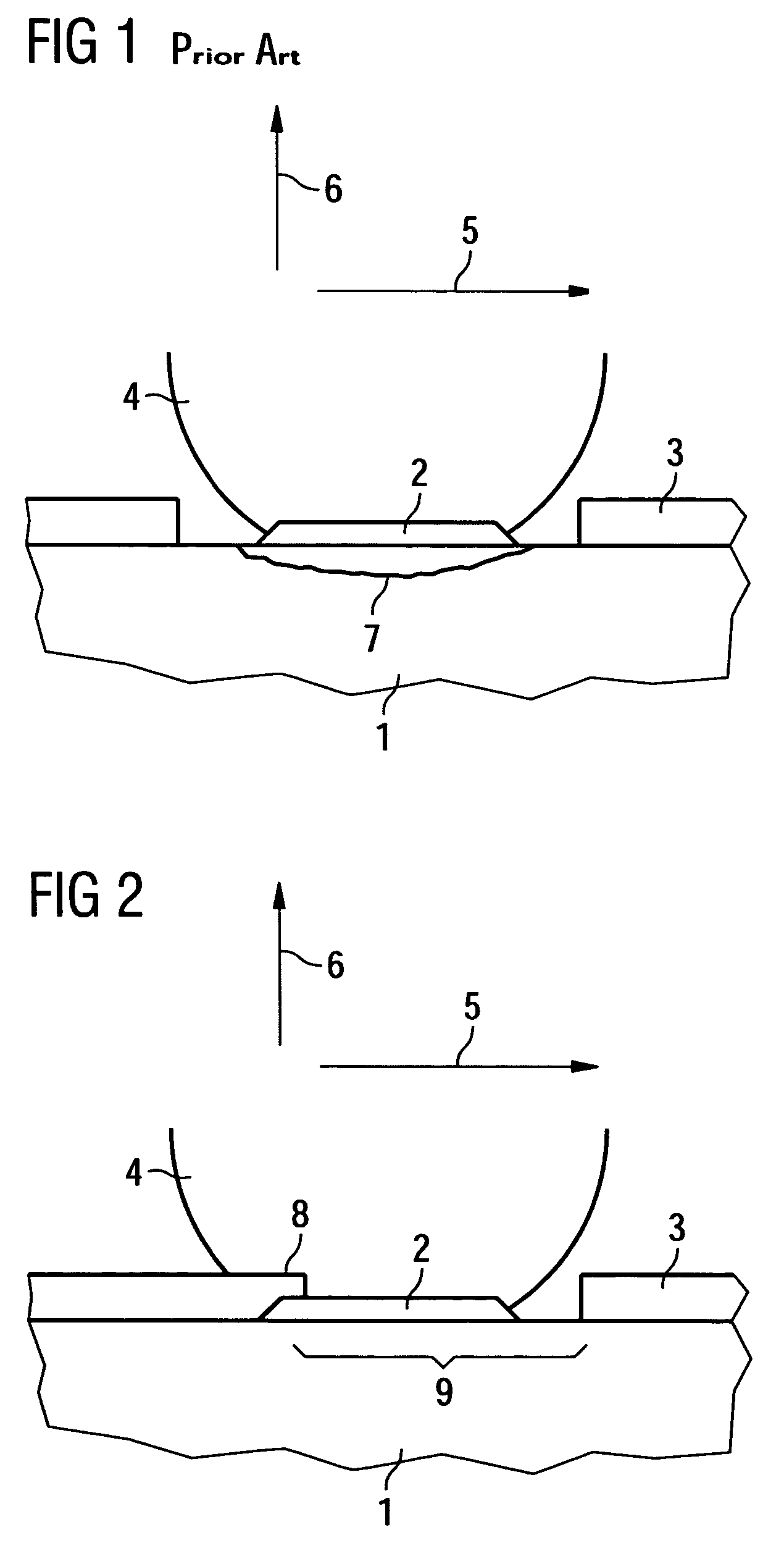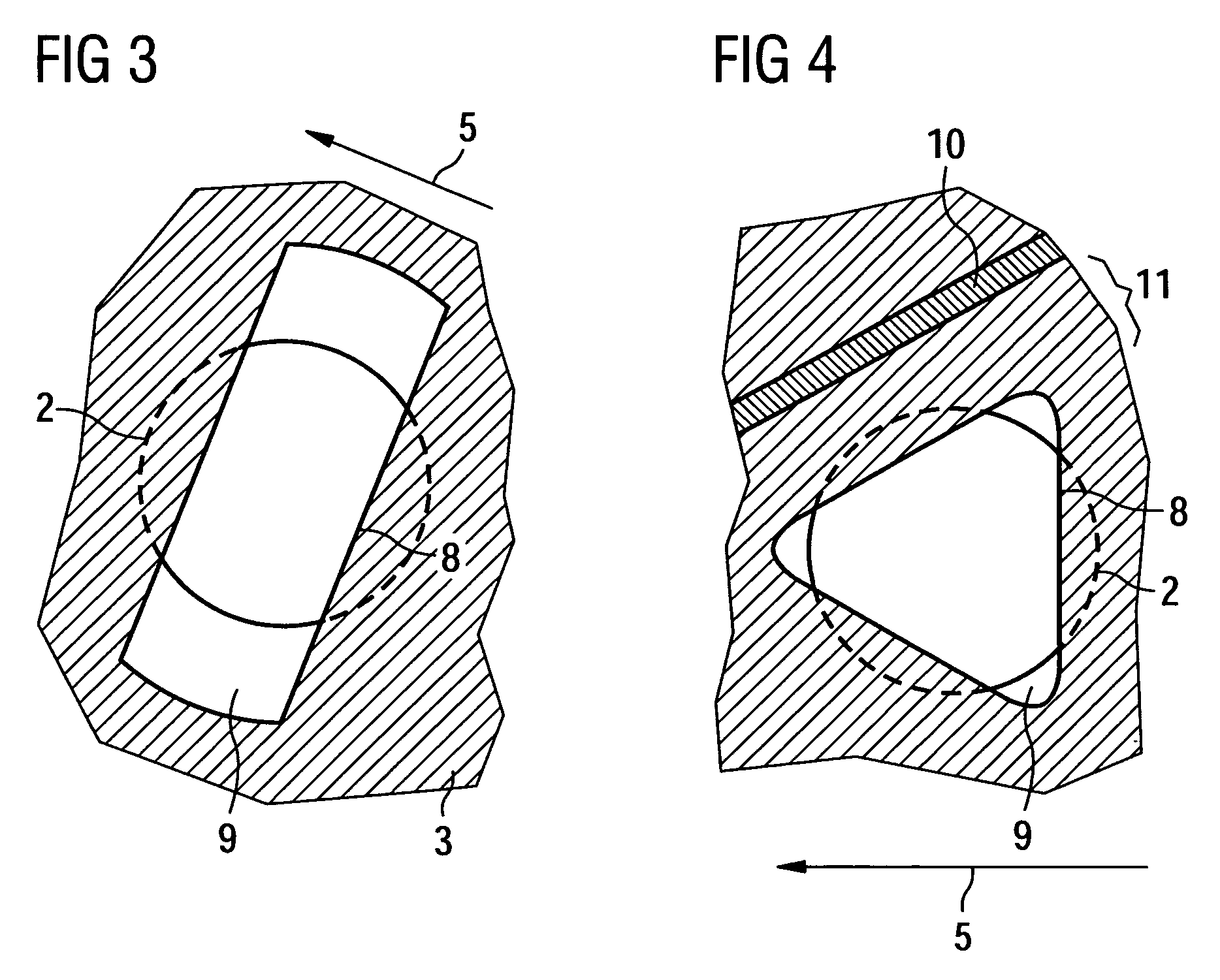Substrate for producing a soldering connection
a technology of soldering connection and substrate, which is applied in the direction of soldering apparatus, manufacturing tools, printed circuit aspects, etc., can solve the problems of reducing the local stress maxima acting partially on individual balls, reducing the risk of short-circuiting bridges, and tearing of connections, so as to prevent the pad from peeling away from the substrate. , the effect of reducing the local stress maxima
- Summary
- Abstract
- Description
- Claims
- Application Information
AI Technical Summary
Benefits of technology
Problems solved by technology
Method used
Image
Examples
Embodiment Construction
[0051]Embodiments of the present invention will now be described. In particular, a prior art configuration is shown in FIG. 1 while various aspects of the invention are described in FIGS. 2-4.
[0052]The soldering connection illustrated in FIG. 1, as corresponds to the prior art, has a substrate 1 with a soldering pad 2 arranged on its surface, the soldering pad is surrounded by a soldering resist mask 3. The soldering resist mask 3 is completely drawn back, so that the ball 4 of the solder is not in contact with the soldering resist mask 3. The laterally acting shear loading 5 illustrated and the perpendicularly acting normal loading 6 illustrated have led, in the present example, to the cracking 7 in the substrate surface and thus to the peeling-away of the soldering pad 2.
[0053]In accordance with the illustration in FIG. 2, assuming the same stress situation as in FIG. 1, due to shear loading 5 and normal loading 6, both of which are determined from the known test conditions of the...
PUM
| Property | Measurement | Unit |
|---|---|---|
| shape | aaaaa | aaaaa |
| circular shape | aaaaa | aaaaa |
| force | aaaaa | aaaaa |
Abstract
Description
Claims
Application Information
 Login to View More
Login to View More - R&D
- Intellectual Property
- Life Sciences
- Materials
- Tech Scout
- Unparalleled Data Quality
- Higher Quality Content
- 60% Fewer Hallucinations
Browse by: Latest US Patents, China's latest patents, Technical Efficacy Thesaurus, Application Domain, Technology Topic, Popular Technical Reports.
© 2025 PatSnap. All rights reserved.Legal|Privacy policy|Modern Slavery Act Transparency Statement|Sitemap|About US| Contact US: help@patsnap.com



